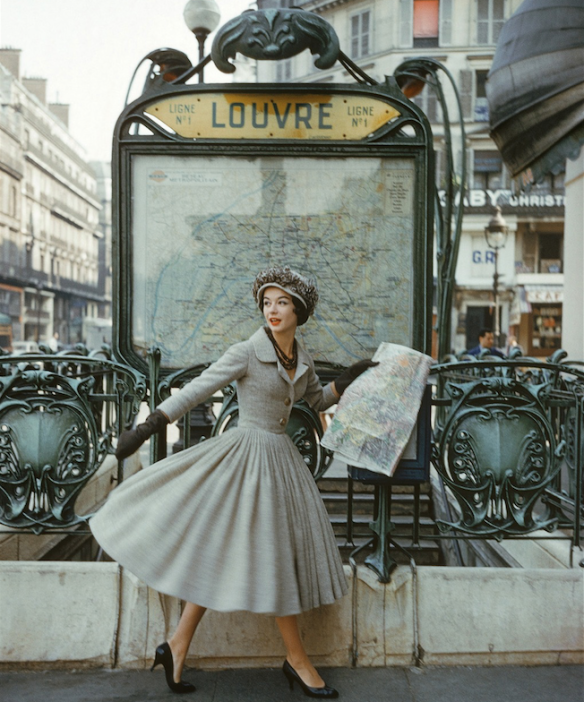
a Dior model, 1957
Oftentimes I find myself craving art (and beauty.) In this world of brutes and atrocity, it’s important to nourish the soul, to uplift and inspire it. Thank goodness for art, artists and art museums. Can you imagine a world without art? It would be a dark and desolate place … a sort of Trumpland, bleak and vacuous.

Dior Haute Couture 2008 – Shot by Patrick Demarchelier
I’ve just seen the Irving Penn photography exhibition at the Grand Palais. Next week I’ll visit the Dior exhibition at the Musée des Arts Décoratifs. There’s also the new Yves Saint Laurent museum to see.

Dior, the Spring-Summer collection, 1948
Growing up, the fashion world was familiar to me. My journalist mother wrote for STYLE, a Maclean Hunter trade publication, where she eventually had her own column. In later years she was fashion editor for a number of Canadian consumer magazines. Yearly, she attended the prêt-à-porter collections in Paris. On occasion I accompanied her. But the best part of having a fashionista mom was visiting the showrooms and ateliers of designers in Montreal and Toronto who received publicity from her double-page fashion features. As a teenager I was gifted with gorgeous outfits and accessories (far too sophisticated for my suburban high school clique!)

I love this. Flannel Dior suit, 1950, photographed by Irving Penn
Christian Dior was more than an artist. He was a postwar fashion visionary and a designer of dreams. He gave back glamour and beauty to women starved of both during the war years under German occupation. He made it possible for women to be fashionable again. Admired by contemporaries such as Balmain and Balenciaga and despised by Chanel, designers everywhere copied him. With his debut haute couture show in 1947, Dior achieved the twin feats of redefining women’s style and re-establishing Paris as the center of the fashion universe.

Dior’s first Peplum in 1947
His “New Look” in 1947 was characterized by cinched waists, full skirts and an extravagant use of fabric that contrasted sharply with the sober styles of the ration era. It was intended as a celebration of femininity and the return of abundance.
Through the 1950s, Dior’s collections followed a particular theme. The Tulip line of 1953 was typified by floaty, floral prints, and two years later the A-Line collection showed a new silhouette whereby the skirt widened out over the hips and legs to resemble a capital A. Dior’s popularity was unrivaled across Europe and the United States.
On October 23, 1957, he died suddenly of a heart attack while on holiday in Italy. Some say it was brought on by choking on a fish bone, others blame a game of cards or a fit of lovemaking. A private plane was sent to Italy to bring the body back to Paris. He was only 52 years old.
His death led to chaos. The closure of the company was considered for a time but ultimately deemed too damaging to the French fashion industry. Instead, the 21-year-old Yves Saint Laurent was promoted to Artistic Director of the house he had joined just two years earlier.

1905 – 1957
Located beside the Louvre on the rue de Rivoli, the Musée des Arts Décoratifs is closed Mondays and open late (until 10 pm) on Thursdays.
http://www.lesartsdecoratifs.fr/en/exhibitions/current-events-1322/musee-des-arts-decoratifs/christian-dior-couturier-du-reve






